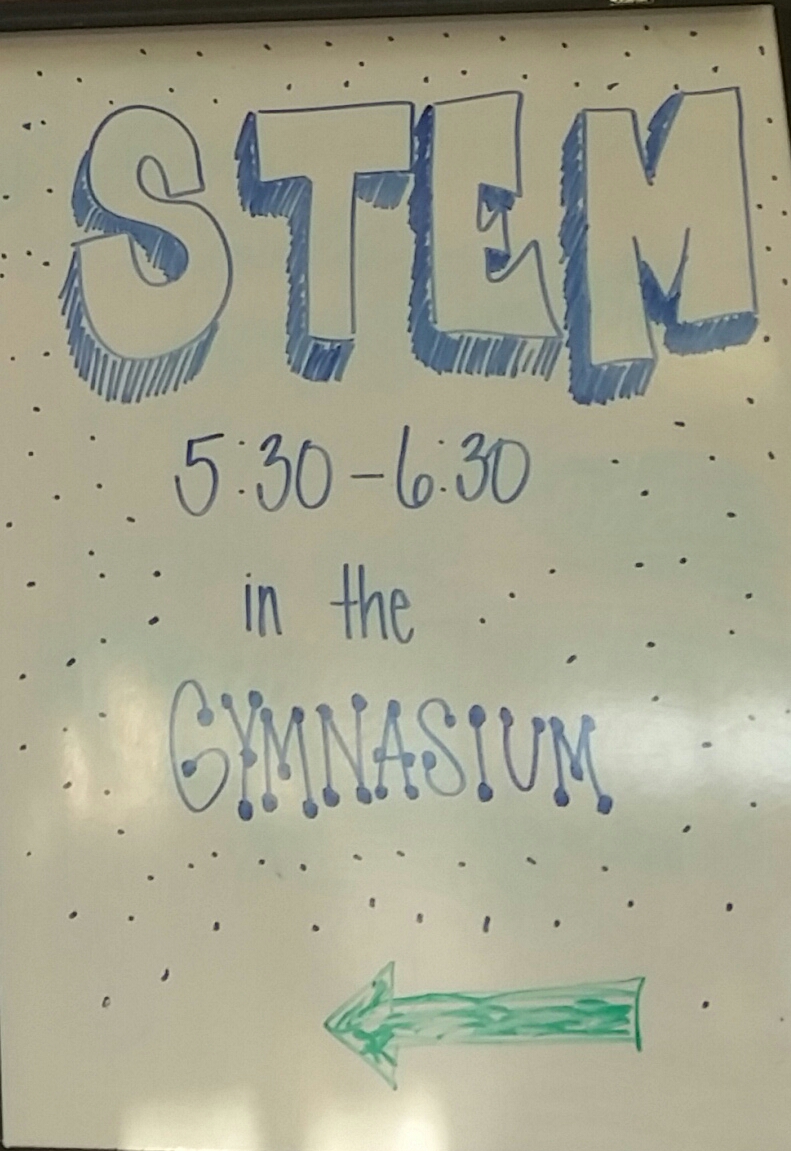“There’s a lot of people who say there are no talented and gifted kids in a Title I school,” said Michelle Suchyj, “or kids in an upside-down tier.” In a school considered “upside-down,” 90 percent of the kids are achieving below grade level, she said.
Suchyj is a teacher for Christina School District’s Talented and Gifted Program. She works at Elbert-Palmer Elementary, Pulaski Elementary and Bayard Middle School – all Title I schools – and she doesn’t agree with those conclusions.
We chatted with Suchyj on STEM Night at Elbert-Palmer Elementary in Wilmington. STEM Night is an evening where students, their families and anyone else interested could participate in fun STEM-related activities. After deflating the blow-up planetarium that she and neighborhood kids had been inside earlier, Suchyj took a break to chat with us. She described growing up on Wilmington’s west side with a family who struggled financially and how she went on to achieve academically and professionally. She said doesn’t want anyone putting limits on any child. She says that so-called “troubled” kids have talents, too, and she likes to use STEM projects to prove it.
“Most children at [elementary-school] age need a reason to be engaged or they give up,” she said.
In order to find a way to keep them excited about learning, Suchyj said she incorporates STEM-related projects for her talented and gifted students but extends the same lessons to all students. She explains that “talented and gifted” is defined by Christina School District as “problem-based learning,” and therefore, knowledge through problem-based learning is something that any student can obtain.
“People think math or science or engineering is this abstract thing,” she said. “My kids, what every kid in this building could tell you what an engineer does — all they do is solve problems.”

At STEM Night, some of the challenge activities for the young problem solvers included:
- building the tallest tower out of playing cards and top with a toy superhero.
- building a bridge out of gumdrops and tongue depressors to ensure a Billy Goat Gruff’s crossing.
- using halved chocolate sandwich cookies and icing to demonstrate the phases of the moon.
Of the kids that participated, she said, “It was great because little kids don’t mind doing things ‘wrong,’ because they don’t have that fear of having the wrong answer.”
Suchyj said she asks her students to consider whether they want to be an adult who problem solves to just get by in life or do they want to be adults who solve big problems or develop technology that may lead to a more productive and financially comfortable life. That’s a big question for anyone to contemplate, and something they’ll have time to think about later because on this STEM Night, they were just kids just having fun.







